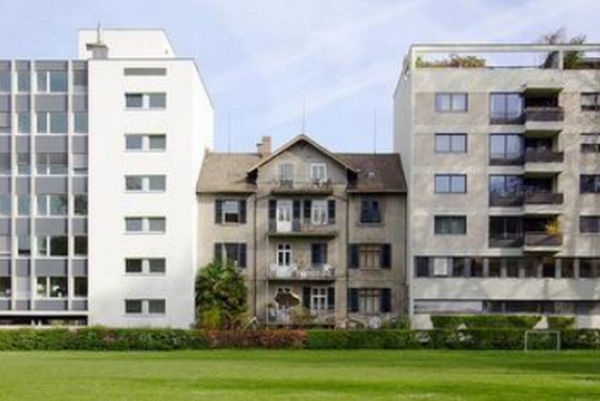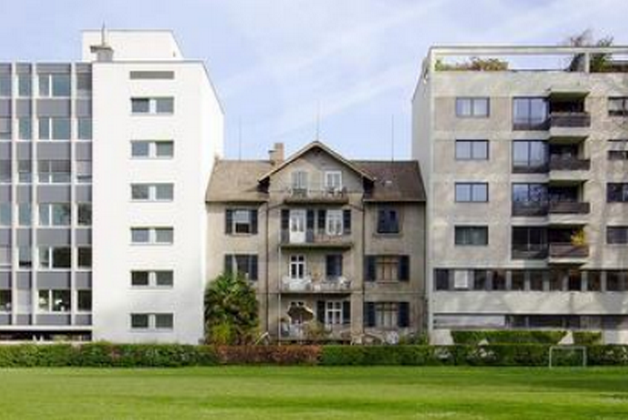 The Association of Bay Area Governments and the Metropolitan Transportation Commission, the governing bodies behind the “Plan Bay Area” (the Plan), claim their blueprint confronts the very real threat of climate change to the Bay Area, but fail to provide any real solutions to the crisis. It is widely acknowledged by those concerned with climate change—and lawfully required by Senate Bill 375 (SB375)—that regional steps must be taken in California to limit greenhouse gas (GHG) emissions to prevent extreme weather, global warming, and rising sea levels. Unfortunately, the vendetta is that not only does Plan Bay Area admit utter failure in discouraging automobile use, it similarly includes the displacement of thousands of low- and middle-income residents. This represents the increasing importance that urban politicians around the nation place on attracting the “creative class” over providing essential services to existing residents.
The Association of Bay Area Governments and the Metropolitan Transportation Commission, the governing bodies behind the “Plan Bay Area” (the Plan), claim their blueprint confronts the very real threat of climate change to the Bay Area, but fail to provide any real solutions to the crisis. It is widely acknowledged by those concerned with climate change—and lawfully required by Senate Bill 375 (SB375)—that regional steps must be taken in California to limit greenhouse gas (GHG) emissions to prevent extreme weather, global warming, and rising sea levels. Unfortunately, the vendetta is that not only does Plan Bay Area admit utter failure in discouraging automobile use, it similarly includes the displacement of thousands of low- and middle-income residents. This represents the increasing importance that urban politicians around the nation place on attracting the “creative class” over providing essential services to existing residents.
The vast majority of Priority Development Areas (PDAs) in San Francisco identified in the Plan—from Chinatown to Candlestick Park—are precisely where most of the city’s minority and low-income residents live and work. Climate change and its impacts are global in scale, and the wealthy are undoubtedly more culpable via their lifestyles, yet through the Plan Bay Area, the onus rests squarely on the shoulders of low- to middle-income residents. While the Plan’s drafters claim they can accommodate 100 percent of the projected population, they advance no pragmatic method of funding affordable housing. [ref]Amy Worth and Mark Luce, “Comments on Draft Plan Bay Area and Draft EIR,” Council of Community Housing Organizations, May 16, 2013.[/ref] In fact, the Council of Community Housing Organizations (Choo Choo)—a San Francisco-based affordable housing coalition—predicts a possible 59 percent shortfall in affordable housing, based on the Plan’s own figures.[ref]Ibid.[/ref] There is no reason to displace 36 percent of low-income residents (a regional estimate—San Francisco figures will assuredly be much higher) where high-density living already exists, while sparing vast expanses of car-friendly suburban space. This is not just a gross social injustice on the part of planners, but it also defeats the Plan’s alleged strategy of smart growth—a development philosophy based on lessening GHG emissions through public transit investment, building more walkable communities, and dense residential construction around transit corridors. Meanwhile, the state has effectively blocked many of the tenant protections that cities in other regions of the U.S. enjoy (i.e. residential and commercial rent controls and various eviction protections), and simultaneously demands equitable housing development through SB375. Such conflicting mandates render the implementation of viable, coherent sustainability initiatives at the regional level unlikely at best, and impossible at worst. The state legislation—the Sustainable Communities and Climate Protection Act of 2008—has placed California ahead of the curve in battling GHG emissions, but far more state investment is required for workable “smart growth” plans to come to fruition.
We should ask what a regional response to climate change can actually accomplish when it presumes, and thereby passively promotes, an increase in automobile usage over the next several decades. The Plan pledges to decrease automobile use by 15 percent per capita, but that is meaningless considering the anticipated population growth in San Francisco. Some estimates place the number of additional cars in San Francisco in 2040 at around 73,000. [ref]Tim Redmond, “Planning for Displacement,” San Francisco Bay Guardian, May 28, 2013.[/ref] There is no mention in the Plan of how the city will accommodate that much parking and congestion. How smart is a “smart growth” plan that allows a mere 7 percent of funding to be directed toward transit? The lack of transit-oriented development in the Plan is reason enough to question the actual motives of its drafters, as it seems like the actual goal of the Plan is to intensify and capitalize on gentrification. Further, while planners base GHG emission reductions on the growing efficiency of electric cars, they fail to account for the enormous emissions and toxins released from electric vehicle production—twice that of conventional cars![ref]“Electric cars ‘pose environmental threat,’” BBC News, October 4, 2012.[/ref]
Despite the fact that the most stable employment opportunities are provided by the health services industry and government in San Francisco, in addition to the various light industrial jobs in the proposed PDAs, the Plan bases almost all future job growth—and its corresponding housing stock—on the “knowledge economy.”[ref]Ibid.[/ref] In other words, the Plan and its supporters propose turning the homes of low-income residents in PDAs, like Bayview-Hunters Point, into the homes of tech workers, many of whom work outside of the city. Instead, if the Plan included a required affordable housing quota for developers to match in all residential development along transit corridors, the lives of so many potential displaced persons would be made easier, their commute cheaper, and their environmental footprints lighter. This, in conjunction with increased suburban development along transit corridors and significant public transit investment, is the most rational, equitable approach to combating climate change
To exploit the admirable goal of lowering GHG emissions to mitigate climate change by using it to attract multitudes of wealthy residents is morally repugnant. That the plan is being imposed on San Franciscans by region-wide, unelected bureaucrats adds a troubling antidemocratic layer to the issue. To displace—or more accurately, replace—so many residents with almost 300,000 new ones is a paltry pretext to make San Francisco a city of elites. Over the past several decades, our cities’ public officials have consistently put the needs of their long-time, low- and middle-income on the backburner. In light of the dissonance between the Plan’s stated goals and its methods of achieving them, Choo Choo has put forward scathing critical analyses of the Plan and its shortcomings.
Take Action:
Visit Choo Choo’s main wesbite to help contribute to the organization’s advocacy of community interests and their continued success in garnering funding for affordable housing. Choo Choo’s website also provides more information on Housing and Land Use policy, along with recent updates of the organization’s activities.




